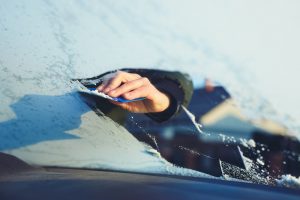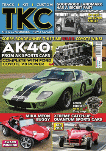ICY WINDSCREEN – NOT GOOD SAY AUTOGLYM
 Almost half of all UK motorists admit to not fully clearing their windscreen of snow and ice before driving off during winter months, according to a new nationwide survey commissioned by Autoglym, the UK’s largest vehicle care brand.
Almost half of all UK motorists admit to not fully clearing their windscreen of snow and ice before driving off during winter months, according to a new nationwide survey commissioned by Autoglym, the UK’s largest vehicle care brand.
1000 car owners across the UK were asked if they ever drive off before their windscreen is completely clear of snow and ice during winter months, and 48 per cent answered ‘yes’ (14 per cent ‘yes, most of the time’, plus a further 34 per cent ‘yes, sometimes’).
Section 41D of the Road Traffic Act 1988 makes it a legal requirement to have a clear view of the road ahead before you set off, which means the windscreen should be fully de-iced on the outside and thoroughly demisted on the inside. Failure to do so could result in penalty points and a fine, as well as creating a significant risk of a collision with other road users. The requirements are also enshrined in Rule 229 of the Highway Code.
Motorists use unconventional implements to de-ice
A de-icer spray kept in the car might be ideal for combatting ice on windscreens, but many people have resorted to more unconventional – and less effective – solutions. In the same survey, consumers were asked: “What unusual methods have you ever used to clear ice or snow from your car windscreen in winter?” 38 per cent admitted to using a credit or debit card to clear their windscreen; 36 per cent said they have used their gloved or bare hands; and 17 per cent said they use a kitchen implement such as a spatula. 10 per cent have used salt, 4 per cent a book or magazine and 2 per cent said they have even used a mobile phone. A further 4 per cent stated they have used a range of other tools and techniques, which include scraping ice away with a piece of Lego or applying hand sanitiser to the glass.
On a chilly morning, consumers understandably want a rapid result but some alternatives to de-icer are certain to do more harm than good. An alarming 50 per cent of 18- to 24-year-olds said they use boiling or hot water to melt the ice (compared to an average of 33 per cent) – a method that results in a dramatic temperature change that can crack reinforced windscreen glass.
Only 14 per cent say they have only ever used a dedicated vehicle de-icer solution or scraper, rather than resorting to some of these unusual methods.
To safely and effectively remove ice on a car’s exterior glass surfaces, Autoglym recommends using a quality product. Autoglym De-Icer is effective down to temperatures as low as -50°C and is harmless to vehicle paintwork, rubber and plastics. As well as windscreens and side glass, it can be used on mirrors, headlamps and even door locks.
To keep the windscreen clear while driving, Autoglym’s high-performing Ultimate Screenwash can be used to ensure a clear screen in all weather and driving conditions. Suitable for all vehicles and spray nozzle types, including headlight washers, it shifts all common road contaminants and will not freeze down to -45°C.
Marloes Rots, Marketing Manager at Autoglym commented: “Our quality de-icer is easy to keep in the car, available to quickly and safely clear screens and side glass when temperatures drop below zero. It can be paired with Autoglym’s Ultimate Screenwash, which has been formulated to clear away contaminants and keep frost at bay. It can be diluted for use at different times of the year – stronger in the winter for enhanced cleaning power and resistance to freezing.”
To purchase the Autoglym De-Icer and Ultimate Screenwash and De-icer, visit: www.amazon.co.uk, www.autoglym.com or visit Halfords outlets or independent car care retailers ENDS.
| Print article | This entry was posted by admin on February 22, 2024 at 6:31 pm, and is filed under News. Follow any responses to this post through RSS 2.0. Both comments and pings are currently closed. |
Comments are closed.















